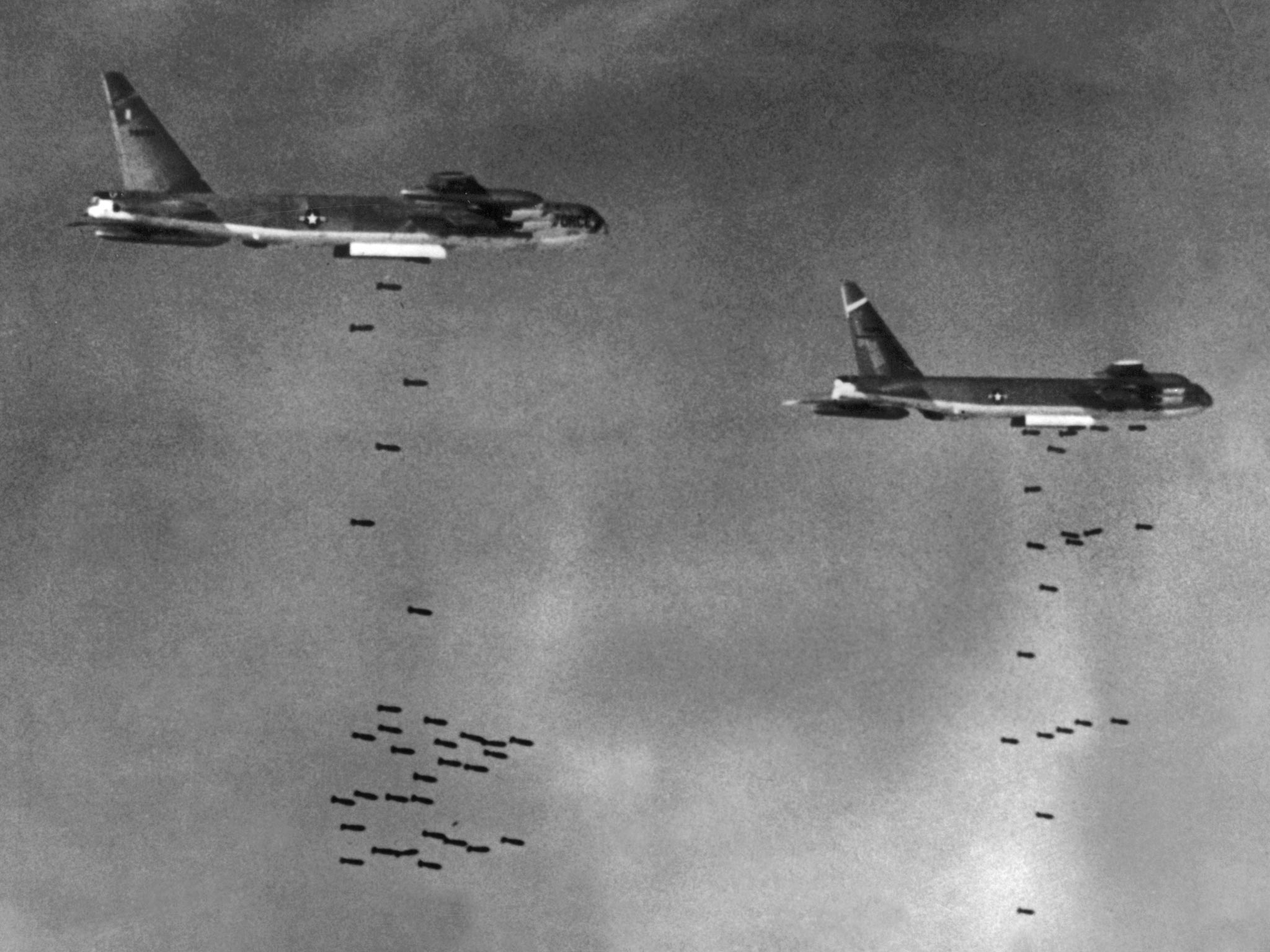Revealed: the night America very nearly nuked itself

Only dumb luck saved America from a nightmare scenario in January 1961 when an Air Force B-52 carrying two nuclear bombs broke apart in flight dropping the weapons on farmland near the city of Goldsboro in North Carolina.
Both bombs had been knocked by the accident into “armed” mode ready to detonate as they fell from the sky.
Documents declassified by the National Security Archive this week leave little doubt as to how close America came to catastrophe.
“Multi-Megaton Bomb Was Virtually ‘Armed’ When It Crashed to Earth” the headline on the report reads. Just as chilling was an observation from the then US Secretary of Defence, Robert McNamara. “By the slightest margin of chance, literally the failure of two wires to cross, a nuclear explosion was averted,” he said.
“The impact of the aircraft break-up initiated the fusing sequence for both bombs,” the summary of the documents said.
Less dangerous was the first bomb. The deployment of its parachute slowed the rate of fall and the loss of a safety pin cut off power from its internal generator.
The second bomb fell freely and, according to the details in the report, cycled through six of the seven steps to final detonation. Only damaged wiring stopped it from going off.
Nor were these small bombs. The plane, which suffered a right wing failure as it flew through the night sky, was carrying two MK39s, each weighing 10,000 pounds with an explosive yield of 3.8 megatons.
That compares with yields of 0.01 and 0.02 megatons for the bombs dropped respectively on Hiroshima and Nagasaki in 1945.
The crash of the bomber was seen by a local farmer. “I heard the whine of an airplane about to land, then there was a big explosion.
“It almost knocked me out of bed. I got up and ran to the window and saw my whole field on fire.”
But he can have had no idea how much graver the events of that night might have been. The full scope of the near-calamity was first revealed in the book Command and Control by Eric Schlosser released last year.
Just how many other such accidents involving thermonuclear payloads have happened over the decades isn’t clear but there are at least 21 declassified reports of airborne incidents involving nuclear bombs between 1950 and 1968.
Even just two months after the Goldsboro event another B-52 crashed in the California desert with two nuclear weapons on board. Safety devices prevented them from detonating.
Join our commenting forum
Join thought-provoking conversations, follow other Independent readers and see their replies
Comments
Bookmark popover
Removed from bookmarks